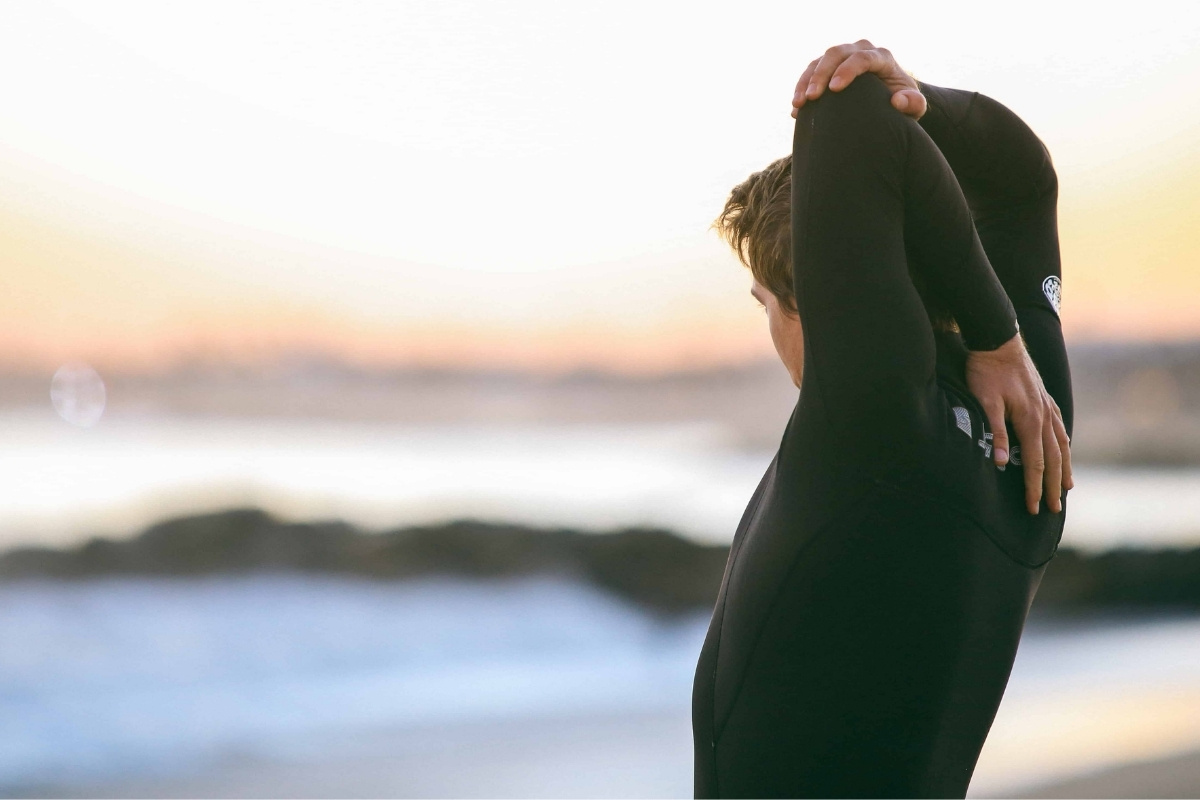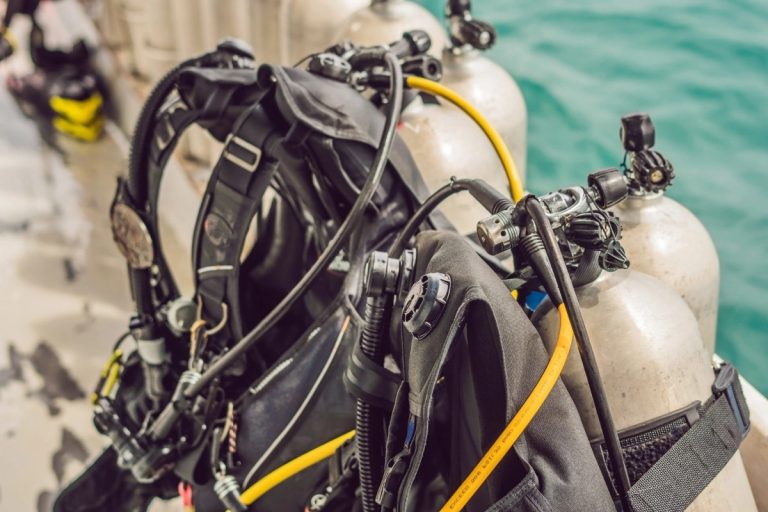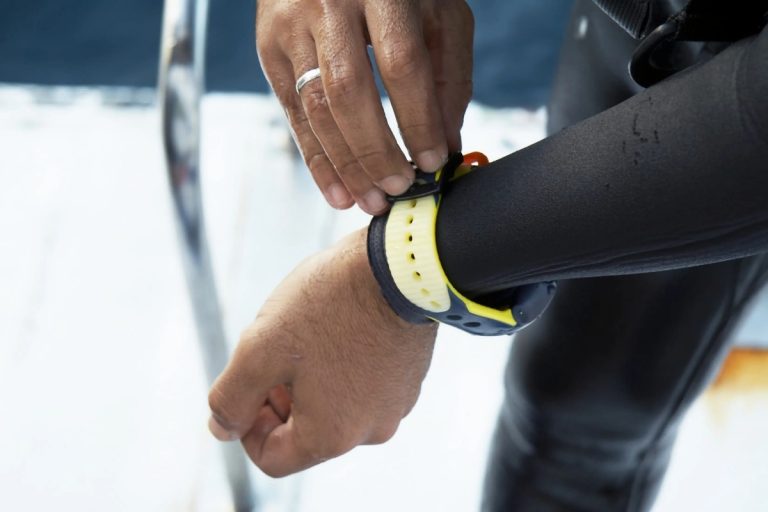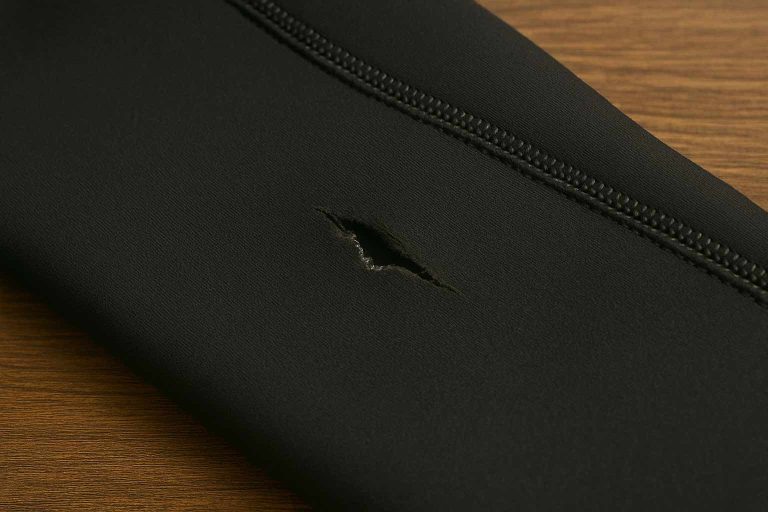- Understanding Wetsuit Thickness
- Choosing the Right Thickness for Hong Kong
- Types of Wetsuits Available
- Importance of Proper Sizing
- Maintaining Your Wetsuit
- Potential Issues with Wetsuits
- Wetsuit Technologies
- Gender-Specific Wetsuit Considerations
- Frequently Asked Questions
- Navigating Wetsuit Choices for Optimal Water Sports Performance
Understanding Wetsuit Thickness
When it comes to water sports in Hong Kong, selecting the right wetsuit thickness can make or break your aquatic adventures. The thickness of your wetsuit, measured in millimeters, directly impacts your comfort, performance, and safety in the water. This measurement refers to the neoprene material’s depth, which determines how much insulation you’ll have against the varying water temperatures around Hong Kong’s coastline.
Most wetsuits feature different thickness zones, with thicker sections around the core body area where heat retention is most critical, and thinner sections at joints and extremities to maintain flexibility. Understanding these variations helps you make informed decisions about which suit will serve you best in Hong Kong’s unique marine environment.
What is Wetsuit Thickness?
Wetsuit thickness represents the depth of neoprene material used in construction, typically ranging from 1mm to 7mm for recreational water sports. The thickness is often expressed as a combination, such as 3/2mm, where the first number indicates the thickness of the torso panels and the second number represents the thickness of the arms and legs.
This graduated thickness system allows manufacturers to balance warmth retention with mobility. Thicker sections provide better insulation for your vital organs, while thinner areas ensure you can still paddle, swim, or perform technical maneuvers without restriction.
Importance of Thickness in Water Sports
The right thickness choice affects every aspect of your water sports experience. Too thin, and you’ll find yourself shivering and cutting sessions short due to cold. Too thick, and you’ll feel restricted, overheated, and fatigued more quickly. Hong Kong’s subtropical climate creates unique challenges, with water temperatures varying significantly between seasons.
During winter months, when water temperatures can drop to around 18°C, adequate thickness becomes a safety issue, not just a comfort preference. Hypothermia can set in quickly in cooler waters, making proper insulation essential for extended water activities.
How Thickness Affects Insulation
Neoprene works by trapping a thin layer of water between the suit and your skin. Your body heat warms this water, creating an insulating barrier. Thicker neoprene provides more insulation but also increases buoyancy and reduces flexibility. The key is finding the sweet spot where you maintain adequate warmth without sacrificing performance.
The insulation effectiveness also depends on fit quality. Even the thickest wetsuit won’t keep you warm if it’s too loose, allowing cold water to flush in and out. This is why proper sizing becomes just as important as thickness selection.
Choosing the Right Thickness for Hong Kong
Hong Kong’s water temperatures create distinct seasonal requirements for wetsuit thickness. Understanding these patterns helps you select the most appropriate gear for year-round water sports participation. The territory’s position in the South China Sea means water temperatures fluctuate more than many tropical locations, requiring careful consideration of seasonal variations.
Local water sports enthusiasts often find themselves needing different thickness options throughout the year, or choosing a versatile middle-ground thickness that works across multiple seasons. Your activity level, body composition, and cold tolerance also influence the ideal thickness choice for Hong Kong conditions.
Water Temperature Considerations
Hong Kong’s water temperatures range from approximately 16°C in winter to 29°C in summer. These significant variations mean that a 2mm shorty perfect for July conditions will leave you uncomfortably cold during February sessions. Winter months typically see temperatures between 16-20°C, while summer brings warmer 26-29°C conditions.
Spring and autumn present transitional periods where water temperatures hover around 22-25°C, creating opportunities for moderate thickness selections. Understanding these seasonal patterns helps you plan your wetsuit purchases and avoid the discomfort of inappropriate thickness choices.
Recommended Thicknesses for Different Conditions
For Hong Kong’s warmest summer conditions (26-29°C), a 1-2mm shorty or spring suit provides adequate protection from sun and minor abrasions without causing overheating. These lighter options work well for surfing, paddleboarding, and other high-activity water sports during peak summer months.
Transitional seasons (22-25°C) call for 2-3mm full suits or 3/2mm combinations. These provide comfortable warmth for extended sessions while maintaining good flexibility. Winter conditions (16-20°C) require 4/3mm or 5/4mm full suits to maintain comfortable body temperature during longer water activities. Some particularly cold-sensitive individuals may prefer even thicker options during the coldest months.
Session Duration and Thickness Selection
Short water sessions of 30-60 minutes allow for thinner wetsuit choices, as your body doesn’t have time to lose significant heat. However, longer sessions of 2-3 hours require more substantial insulation to maintain comfort and safety throughout the activity.
Consider your typical session length when selecting thickness. Weekend warriors who spend entire mornings on the water need different insulation than those taking quick after-work surf sessions. Your activity intensity also matters, as high-energy sports generate more body heat than leisurely activities.
Types of Wetsuits Available
The wetsuit market offers various styles designed for different activities, conditions, and preferences. Understanding these options helps you select the most appropriate type for your specific Hong Kong water sports needs. Each style offers distinct advantages and limitations that should align with your intended use patterns.
From minimalist rashguards to full winter suits, the range of available options can seem overwhelming. However, focusing on your primary activities and local conditions helps narrow the choices to the most practical selections for Hong Kong’s unique environment.
Full-Body Wetsuits
Full-body wetsuits provide complete coverage from neck to ankles and wrists, offering maximum warmth retention and protection. These suits work best for Hong Kong’s cooler months and longer water sessions. The continuous coverage prevents cold water flushing, maintaining the insulating water layer across your entire body.
Modern full suits feature improved flexibility through strategic paneling and advanced neoprene formulations. Back-zip and chest-zip options offer different benefits, with chest-zip models generally providing better water sealing and flexibility, while back-zip versions offer easier entry and exit.
Shorties and Their Uses
Shorty wetsuits, also called spring suits, provide torso coverage with short arms and legs. These suits work perfectly for Hong Kong’s warmer months when full coverage isn’t necessary but some insulation and protection remain beneficial. They offer an excellent compromise between freedom of movement and thermal protection.
Shorties excel for high-activity water sports where overheating becomes a concern. They also work well for beginners who need some thermal assistance but want to maintain maximum mobility while learning new skills.
Specialized Wetsuits for Specific Sports
Different water sports have developed specialized wetsuit designs optimized for their specific requirements. Surfing suits emphasize flexibility and durability in high-wear areas, while diving suits prioritize thermal efficiency and buoyancy characteristics. Kitesurfing and windsurfing suits often feature reinforced seat and knee areas for harness compatibility.
Understanding these specialized features helps you select suits that enhance performance in your chosen activities. Generic wetsuits work for casual use, but serious participants often benefit from sport-specific designs.
Importance of Proper Sizing
Proper wetsuit fit dramatically impacts both thermal performance and comfort during water activities. Even the perfect thickness choice becomes ineffective if the suit doesn’t fit correctly. Understanding fit principles and following proper fit tips ensures you get maximum benefit from your wetsuit investment.
A well-fitted wetsuit should feel snug without being restrictive, allowing for full range of motion while minimizing water flushing. This balance requires attention to multiple fit factors beyond simple size selection.
Why Fit Matters
Wetsuit thermal efficiency depends entirely on maintaining a thin, stable water layer between the suit and your skin. Loose areas allow cold water to flush in and out, destroying the insulating effect and leaving you cold despite adequate thickness. Conversely, overly tight suits restrict blood circulation and movement, causing discomfort and reducing performance.
Proper fit also affects durability, as loose suits experience more stress and wear during movement. Well-fitted suits move with your body naturally, reducing strain on seams and extending useful life.
Signs of a Properly Fitted Wetsuit
A correctly fitted wetsuit should feel snug across the torso without restricting breathing. The suit should conform to your body shape without loose folds or gaps, particularly around the neck, wrists, and ankles where water entry commonly occurs. You should be able to move freely through your full range of motion without the suit pulling or binding.
The neck seal should be snug but not choking, allowing minimal water entry while remaining comfortable. Shoulder and arm movement should feel natural, without excessive pulling or restriction during paddling motions.
Common Sizing Mistakes to Avoid
Many people choose wetsuits that are too large, thinking they’ll be more comfortable. This mistake destroys thermal efficiency and actually creates more discomfort through cold water flushing. Conversely, choosing suits that are too small restricts movement and circulation, causing fatigue and discomfort.
Another common error involves ignoring brand-specific sizing variations. Different manufacturers use different sizing standards, so always try suits on or carefully check sizing charts rather than assuming your size remains constant across brands.
Maintaining Your Wetsuit
Proper wetsuit maintenance significantly extends suit life and maintains performance characteristics. Hong Kong’s warm, humid climate creates specific challenges for wetsuit care, making proper maintenance techniques even more critical. Following established neoprene care practices prevents premature deterioration and maintains thermal efficiency.
Regular maintenance also helps identify potential problems before they become major issues, allowing for timely repairs that extend suit life. Simple care routines make a significant difference in long-term wetsuit performance and value.
Rinsing After Use
Thorough freshwater rinsing after each use removes salt, sand, and other contaminants that can damage neoprene over time. Salt crystals are particularly damaging, as they continue abrading the material even after the suit dries. Hong Kong’s marine environment often includes additional pollutants that make thorough rinsing even more important.
Pay special attention to zippers and seams during rinsing, as these areas tend to trap contaminants. Use cool or lukewarm water, as hot water can damage neoprene and reduce its flexibility and insulating properties.
Drying Techniques
Proper drying prevents bacterial growth and material degradation. Hang wetsuits inside-out in shaded, well-ventilated areas away from direct sunlight. Hong Kong’s intense sun can quickly damage neoprene, causing it to become brittle and lose elasticity.
Avoid using hangers that create stress points on the shoulders. Instead, use wide hangers or fold the suit over a drying line at the waist. Ensure the suit is completely dry before storage to prevent mold and mildew growth in Hong Kong’s humid conditions.
Storage Best Practices
Store clean, dry wetsuits in cool, dark locations away from heat sources and chemicals. Fold suits loosely or hang them properly to prevent permanent creases. Avoid storing wetsuits in car trunks or other hot locations, as heat accelerates neoprene degradation.
Consider using cedar blocks or other natural moisture absorbers in storage areas to combat Hong Kong’s humidity. Proper storage significantly extends wetsuit life and maintains performance characteristics over time.
Potential Issues with Wetsuits
Even well-maintained wetsuits eventually develop problems that affect performance and comfort. Understanding common issues and their solutions helps you address problems quickly and effectively. Early intervention often prevents minor problems from becoming major failures requiring complete suit replacement.
Recognizing the signs of wetsuit problems allows you to take corrective action before issues impact your water sports activities. Many problems can be repaired at home with basic tools and materials.
Common Wetsuit Problems
Tears and punctures represent the most frequent wetsuit problems, often occurring around high-stress areas like knees, elbows, and seat areas. These can result from normal wear, contact with rough surfaces, or accidental damage from fins or other equipment.
Seam failures occur when the bonded or stitched connections between neoprene panels separate. This typically happens in older suits or those subjected to excessive stress. Zipper problems, including stuck or broken zippers, also commonly affect wetsuit functionality.
How to Identify Tears and Leaks
Small tears and holes may not be immediately obvious but can be detected through systematic inspection. Check high-wear areas carefully, looking for thin spots or small punctures. Water entry during use often indicates leak locations, though pinpointing exact spots may require careful examination.
Seam problems typically appear as separation lines where panels meet. These may start small but tend to grow quickly under stress. Regular inspection helps catch these problems early when repairs are still feasible.
Repair Techniques
Many wetsuit problems can be addressed through proper repairing tears and leaks techniques using neoprene cement, patches, and basic tools. Small tears often respond well to flexible neoprene adhesive applied to both sides of the damage. Larger tears may require patches cut from spare neoprene material.
Seam repairs typically involve cleaning the area thoroughly and re-bonding with appropriate neoprene cement. Zipper problems may require lubrication, cleaning, or complete replacement depending on the specific issue.
Wetsuit Technologies
Modern wetsuit technology continues advancing, offering improved performance, comfort, and environmental responsibility. Understanding these developments helps you make informed choices about new wetsuit purchases and appreciate the benefits of technological improvements.
From advanced neoprene formulations to innovative construction techniques, technology improvements directly benefit Hong Kong water sports enthusiasts through better-performing, longer-lasting gear.
Advancements in Neoprene Technology
Modern neoprene formulations offer improved flexibility, durability, and thermal efficiency compared to traditional materials. Cell structure improvements provide better insulation with less thickness, allowing for more flexible suits without sacrificing warmth.
Advanced manufacturing techniques create more consistent material properties and improved bonding between layers. These improvements result in suits that maintain their performance characteristics longer and provide better value over their useful life.
Eco-Friendly Alternatives
Environmental concerns have driven development of more sustainable wetsuit materials and manufacturing processes. Plant-based neoprene alternatives reduce petroleum dependency while maintaining performance characteristics. Recycled materials and improved manufacturing efficiency also reduce environmental impact.
These eco-friendly options often perform as well as traditional materials while supporting environmental sustainability goals. As these technologies mature, they’re becoming more widely available and cost-effective.
Flexible and Durable Designs
Modern suit designs incorporate strategic paneling and construction techniques that enhance flexibility without compromising durability. Advanced seaming methods create stronger, more flexible connections between panels. Dry suit fitting principles have influenced wetsuit design, improving overall performance and comfort.
These design improvements particularly benefit active water sports participants who demand maximum mobility and performance from their gear. The combination of better materials and improved construction creates suits that outperform previous generations significantly.
Gender-Specific Wetsuit Considerations
Men’s and women’s wetsuits feature different cuts and proportions designed to accommodate anatomical differences and provide optimal fit and performance. Understanding these differences helps ensure you select suits that provide the best possible fit and comfort for your body type.
Beyond basic sizing differences, gender-specific designs often incorporate features that enhance comfort and performance for different body shapes and proportions.
Differences in Fit and Design
Women’s wetsuits typically feature broader hips, narrower shoulders, and longer torso proportions compared to men’s suits. The chest area incorporates different shaping and support features designed for female anatomy. These design differences significantly impact fit quality and comfort.
Men’s suits generally feature broader shoulders, narrower hips, and different torso proportions. Understanding these differences helps explain why unisex or incorrectly gendered suits often fit poorly despite correct size selection.
Choosing Based on Body Shape
Individual body shapes vary significantly within gender categories, making it important to consider your specific proportions when selecting wetsuits. Some people find better fits in suits designed for the opposite gender, particularly those with body shapes that don’t conform to typical gender proportions.
Focus on achieving the best possible fit rather than strictly following gender designations. A well-fitted suit from any category will outperform a poorly fitted suit from the “correct” gender category.
Popular Brands for Men and Women
Different brands excel in different areas of fit and design, with some specializing in particular body types or gender-specific features. Researching brand reputations and trying multiple options helps identify the best fit for your specific needs and body type.
Consider factors beyond just fit, including durability, warranty coverage, and brand support when making selection decisions. The best wetsuit combines proper fit with reliable performance and good value over its useful life.
Frequently Asked Questions
What thickness of wetsuit is recommended for summer water sports in Hong Kong?
For summer conditions (26-29°C), a 1-2mm shorty or spring suit is recommended for adequate protection without overheating.
How does water temperature affect wetsuit thickness choice?
Wetsuit thickness should be adjusted according to seasonal water temperature variations in Hong Kong, with thicker suits needed for winter (16-20°C) and thinner options suitable for warmer months.
What are the common issues with wetsuits?
Common issues include tears, punctures, and zipper problems, which can often be repaired at home with appropriate techniques.
Why is proper sizing important for wetsuits?
Proper sizing is crucial for thermal efficiency and comfort, as a poorly fitting wetsuit can lead to cold water flushing and discomfort.
What advancements are seen in modern wetsuit technology?
Modern wetsuits benefit from improved neoprene formulations, eco-friendly materials, and designs that enhance flexibility and durability.
Navigating Wetsuit Choices for Optimal Water Sports Performance
Selecting the right wetsuit thickness and style is essential for enjoying water sports in Hong Kong’s diverse climate. By understanding the seasonal water temperature variations and considering personal activity levels, enthusiasts can make informed decisions that enhance both comfort and performance in the water.






